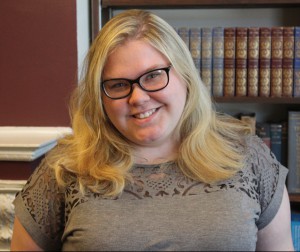Securing the Wall: Church-State Separation and Youth Activism in America

I WAS TWENTY-FOUR YEARS OLD when I began working for Americans United for Separation of Church and State in 1987. No one back then used the term “nones” to describe nonbelievers, but it would have fit me.
As I began my travels through the world of church-state separation, speaking to Americans United chapters and allied organizations (often humanist groups), I noticed something right off the bat: almost always, I was the youngest person in the room.
Nearly thirty years have passed, and I can’t say that any longer. But it’s still true that crowds gathering to hear a talk about church-state separation tend to skew older.
Why is this the case?
It may be as simple as where you’re situated in life. Retired people usually have more time (and sometimes money) to devote to activism. When my wife and I were in our thirties, we were busy raising two children and building our careers. Leisure time was a precious commodity. Money was also tight. Dropping a large sum to fly across the country to a conference was out of the question.
Much has changed since 1987, however, and young people today have more options for activism. These days you don’t need to gather in a room somewhere to organize, plot strategy, and talk. You can do it online—and this approach seems to be the one favored by many young people.
Things are definitely changing—and for the better. In recent years, I’ve met some truly impressive youth activists who work to defend separation of church and state. Amanda Scott stood up for the church-state wall in Alabama—a move that did not endear her to many of that state’s residents. She’s currently attending Georgetown University and interned at the American Humanist Association this past summer.

Amanda Scott
While in middle school, Harshini Abbaraju made a film about Engel v. Vitale, a pivotal Supreme Court school prayer case from 1962, for a national history competition. It included interviews with a federal judge and the attorney who argued the case. (Abbaraju outdid me there. I tried to interview that attorney for a story I wrote about Engel in 2012 but couldn’t land him.)
Yet when I’m on the road, I frequently hear a question from people whose hair is, like mine, rapidly turning gray or already has: How can we get more young people involved?
It’s not an easy question to answer, but we have to start with the recognition that people at different stages of their lives will have different things to offer. We must honor that and happily accept whatever they can give.
People who are just starting off in a first job often live pretty close to the edge when it comes to finances. It’s unrealistic to expect people at that stage will be able to donate much money to a cause. But they still have much to offer. They can be involved by volunteering time, promoting events, helping out with online organizing, and so on.
We should also encourage young activists to exploit their skill sets. I’m old enough to remember when there was no social media. Young people grew up with it. I’m humble enough to admit that they know more about it than I do, and I want their help. It would be foolish not to tap into that resource. Social media can be a powerful tool for organizing people and spreading the word about events.
But perhaps the most important element is making the proper connections so younger folks understand why support for separation of church and state has been so crucial to humanism for so long.
Today’s young people grew up in a world where many aspects of separation of church and state were taken for granted. Many didn’t experience mandatory prayer, Bible reading, or creationism in public schools. They don’t personally remember the days when religiously based censorship was common. They didn’t live through the period when powerful sectarian interests made it next to impossible to buy contraceptives. They weren’t around for the first wave of feminism, and when they came of age, the LGBT rights movement was well under way.
Yet none of these issues has been totally resolved, despite favorable Supreme Court rulings. Some public school officials continue to preach to students, cases of censorship flare up from time to time, and efforts to deny employees access to birth control continue apace. Women’s rights are far from secure, and the LGBT community remains under attack.
If you drill down enough, you’ll find that each of these issues shares a common theme: separation of church and state. In each case, religious (usually fundamentalist) organizations are pushing to make their theology the law for all to follow.
These groups and their members believe that only their form of prayer pleases God and they reject modern science, so they push for their religion in public schools. Because they don’t like certain books, magazines, or films, they think no one should have access to them. They use a bogus “religious freedom” argument to restrict access to birth control. They work constantly to roll back the gains made by women and the LGBT community.
Years ago, I gave a speech during which I told audiences to imagine an actual brick wall. Picture the issues I’ve just outlined—freedom from government-imposed worship, the right to learn, and support for science, reproductive rights, women’s rights, and LGBT rights—resting on top of that wall. If the wall is eroded to the point where it weakens and collapses, what happens to those issues? They all fall down along with the wall.
That wall is, of course, the wall of separation between church and state. That protective barrier holds up many of our rights. That connection needs to be made explicit—to activists of all ages.
Finally, we must not fall into the trap of thinking that if we adopt one cause, such as defending the church-state wall, we must jettison another or that there isn’t enough room on our plate for a host of other social justice issues.
Humanism may not be a mass movement in the United States, but its supporters are spirited, passionate, and committed. Our ability to address compelling issues of the day is limited only by our imaginations.
That holds true for everyone—from the young to the young at heart.
